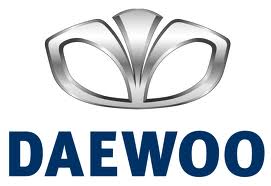Lanos S Hatchback L4-1.6L DOHC D-TEC MFI (1999)

Alignment: Description and Operation
FOUR WHEEL ALIGNMENT
The first responsibility of engineering is to design safe steering and suspension systems. Each component must be strong enough to withstand and
absorb extreme punishment. Both the steering system and the front and the rear suspension must function geometrically with the body mass.
The steering and the suspension systems require that the front wheels self-return and that the tire rolling effort and the road friction be held to a
negligible force in order to allow the customer to direct the vehicle with the least effort and the most comfort.
A complete wheel alignment check should include measurements of the rear toe and camber.
Four-wheel alignment assures that all four wheels will be running in precisely the same direction.
When the vehicle is geometrically aligned, fuel economy and tire life are at their peak, and steering and performance are maximized.
TOE
Toe-in is the turning in of the tires, while toe-out is the turning out of the tires from the geometric centerline or thrust line. The toe ensures parallel
rolling of the wheels.
The toe serves to offset the small deflections of the wheel support system which occur when the vehicle is rolling forward. The specified toe angle is
the setting which achieves 0 degrees of toe when the vehicle is moving.
Incorrect toe-in or toe-out will cause tire wear and reduced fuel economy. As the individual steering and suspension components wear from vehicle
mileage, additional toe will be needed to compensate for the wear.
Always correct the toe dimension last.
CASTER
Caster is the tilting of the uppermost point of the steering axis either forward or backward from the vertical when viewed from the side of the vehicle.
A backward tilt is positive, and a forward tilt is negative. Caster influences directional control of the steering but does not affect tire wear. Weak
springs or overloading a vehicle will affect caster. One wheel with more positive caster will pull toward the center of the car. This condition will cause
the car to move or lean toward the side with the least amount of positive caster. Caster is measured in degrees and is not adjustable.
CAMBER
Camber is the tilting of the top of the tire from the vertical when viewed from the front of the vehicle. When the tires tilt outward, the camber is
positive. When the tires tilt inward, the camber is negative. The camber angle is measured in degrees from the vertical. Camber influences both
directional control and tire wear.
If the vehicle has too much positive camber, the outside shoulder of the tire will wear. If the vehicle has too much negative camber, the inside shoulder
of the tire will wear.
Camber is not adjustable.
STEERING AXIS INCLINATION
Steering Axis Inclination (SAI) is the tilt at the top of the steering knuckle from the vertical. Measure the SAI angle from the true vertical to a line
through the center of the strut and the lower ball joint as viewed from the front of the vehicle.
SAI helps the vehicle track straight down the road and assists the wheel back into the straight ahead position. SAI on front wheel drive vehicles should
be negative.
INCLUDED ANGLE
The included angle is the angle measured from the camber angle to the line through the center of the strut and the lower ball joint as viewed from the
front of the vehicle.
The included angle is calculated in degrees. Most alignment racks will not measure the included angle directly. To determine the included angle,
subtract the negative or add the positive camber readings to the Steering Axis Inclination (SAI).
SCRUB RADIUS
The scrub radius is the distance between true vertical and the line through the center of the strut and lower ball joint to the road surface. Scrub radius
is built into the design of the vehicle. Scrub radius is not adjustable.
SETBACK
The setback is the distance in which one front hub and bearing assembly may be rearward of the other front hub and bearing assembly. Setback is
primarily caused by a road hazard or vehicle collision.
TURNING ANGLE
The turning angle is the angle of each front wheel to the vertical when the vehicle is making a turn.
